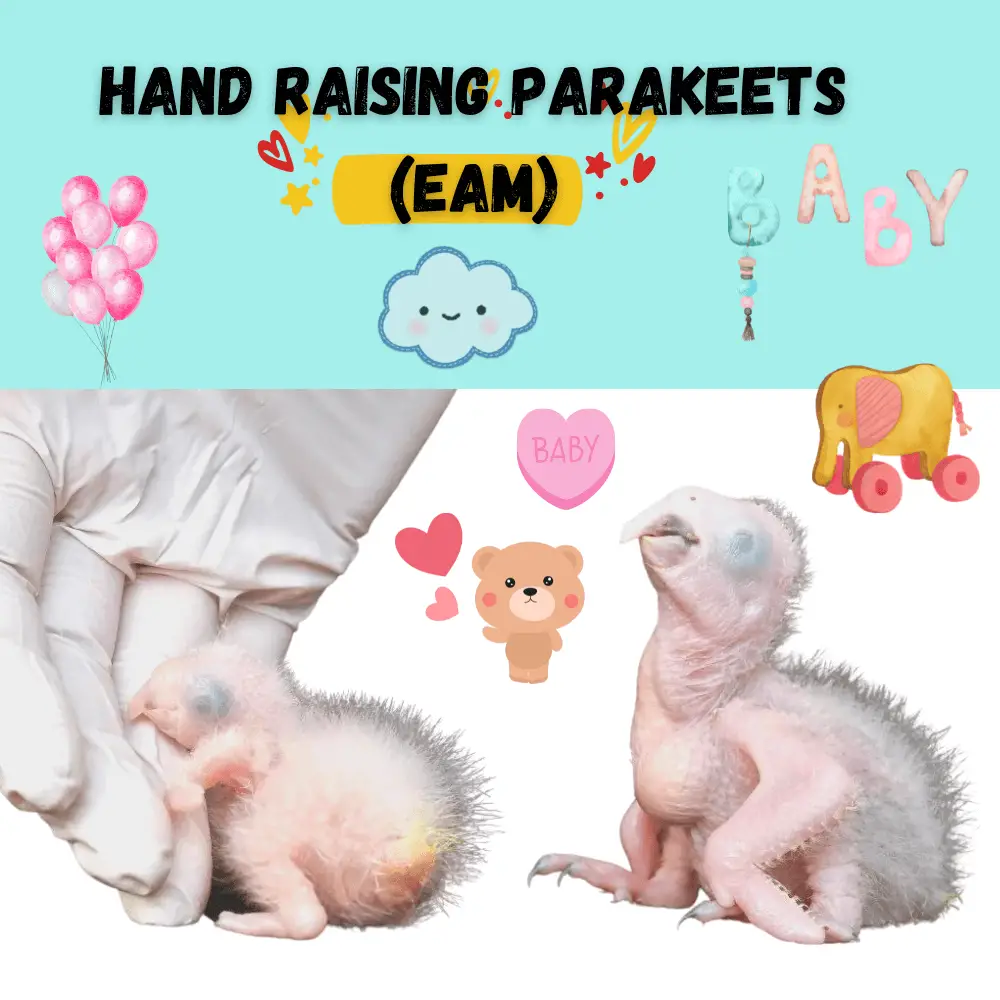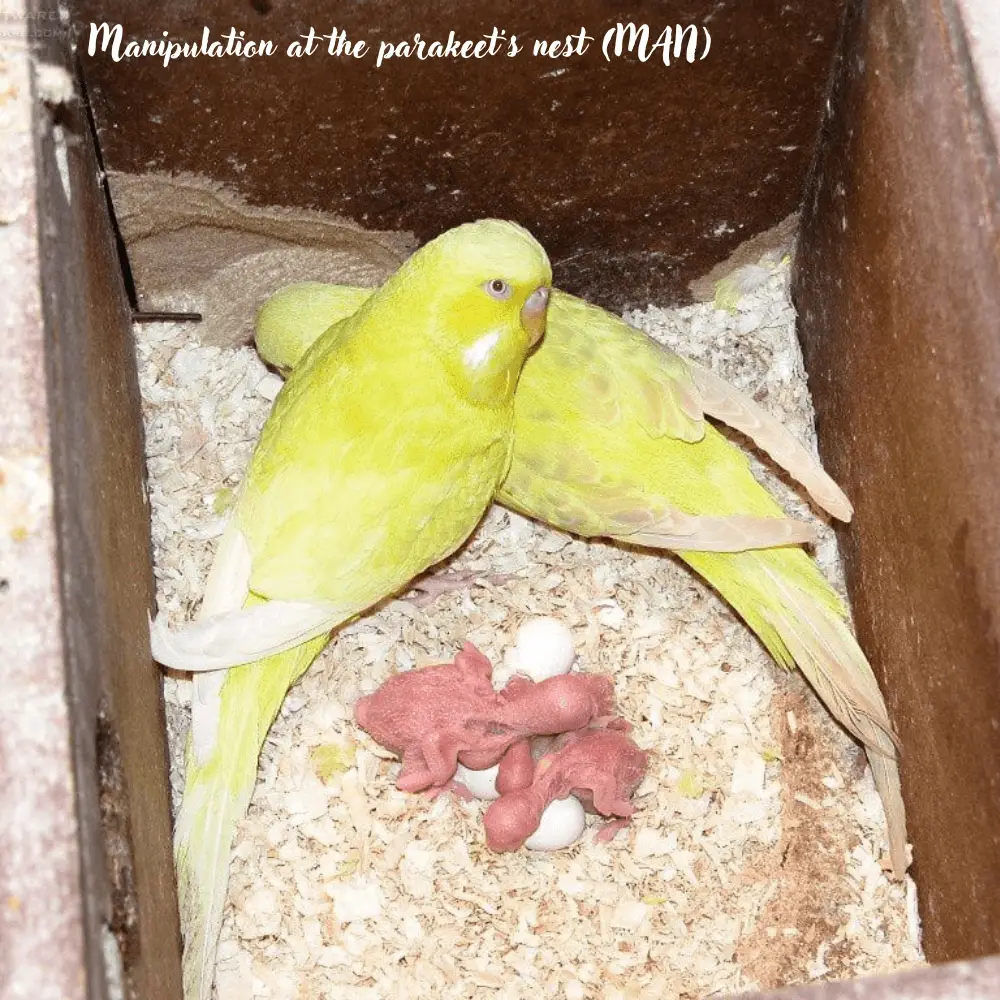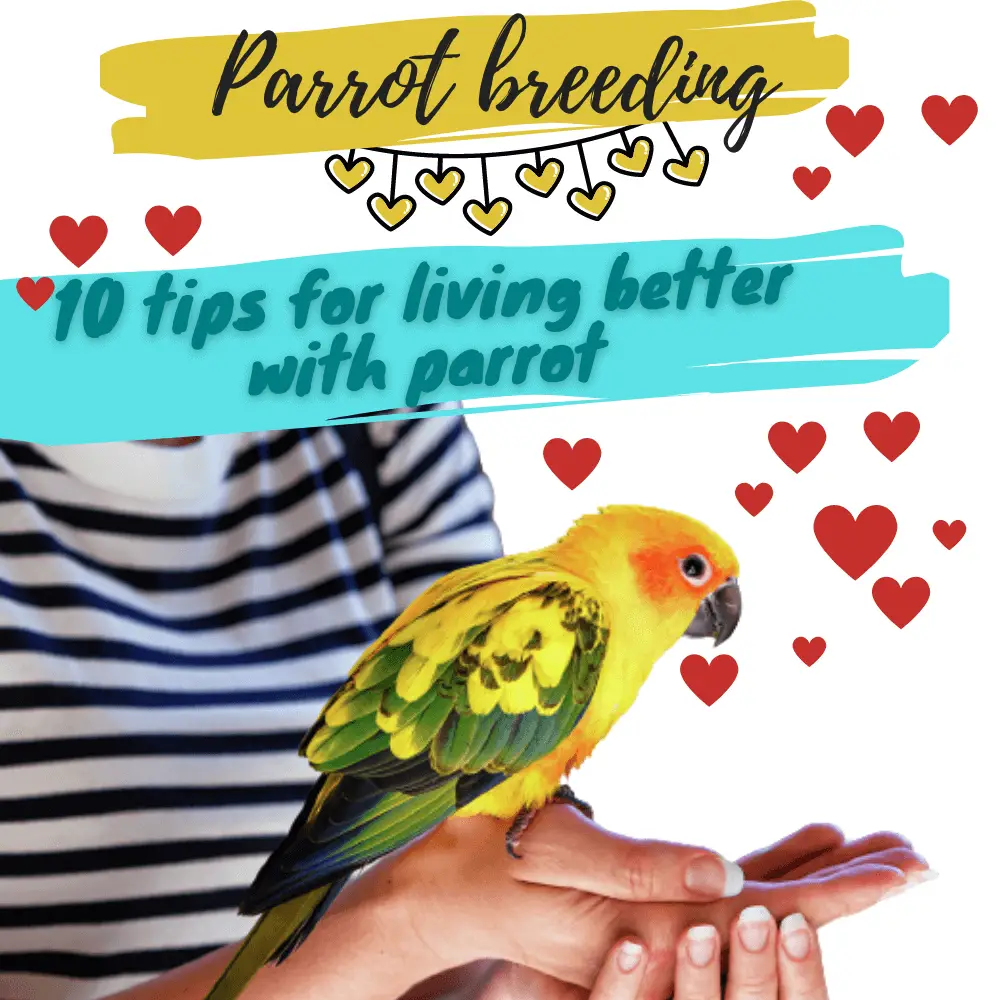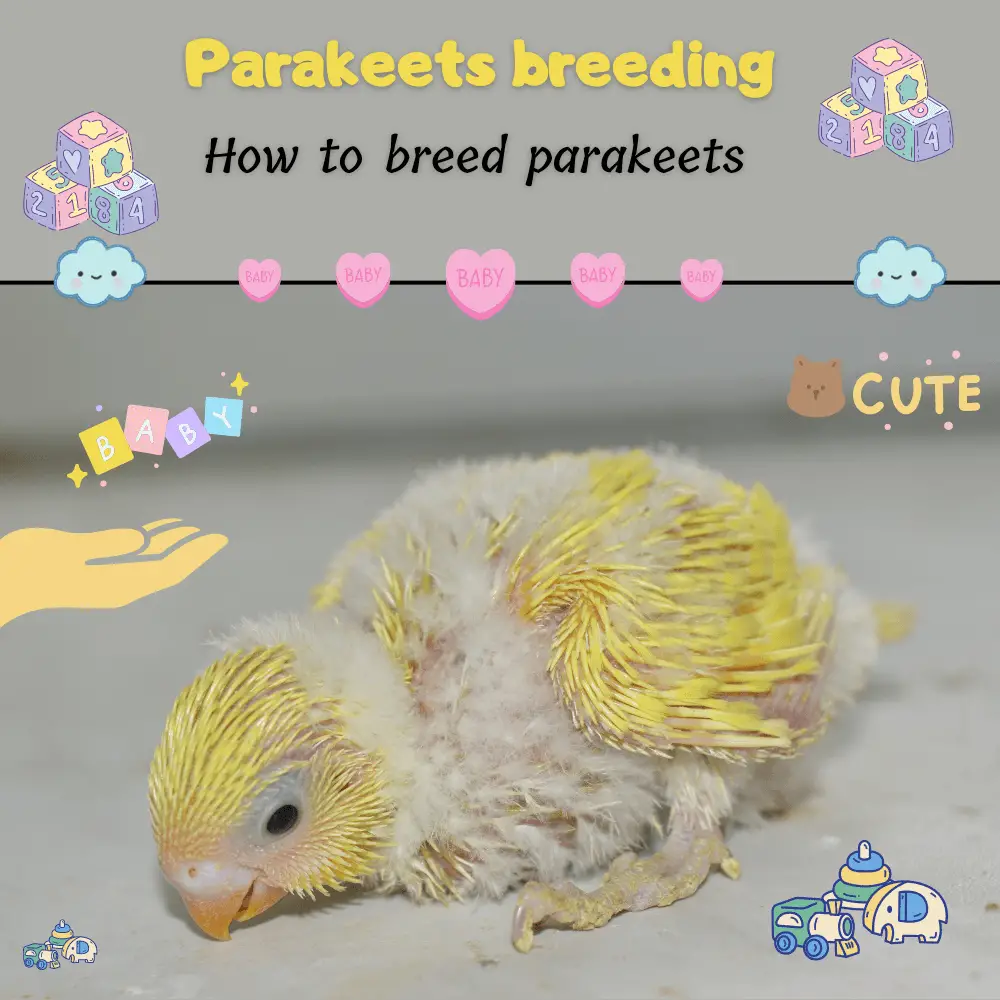Parakeets breeding: Several methods are used to rear newborn parakeets: rearing by hand (EAM), my parents (EPP), or manipulation in the nest (MAN). The way a parrot is raised plays a role in its evolution and future character. Hand rearing is often favored because it allows the animal to socialize with humans. Is this the preferred farming method?
What method should you choose to raise your parakeets? Is rearing by hand better? We tell you more about breeding EAM, MAN, and EPP parakeets.
Hand raising parakeets(EAM)

When we talk about raising a baby parakeet by hand, we mean removing the parrot from its parents at an early age to be raised by the human. This breeding method, which cuts off the baby parrot from all contact with its fellow creatures, allows the animal to immerse itself in humans.
The baby parakeet will identify with the human and see it as its parent, then as its congener. Breeders favor hand-rearing in response to demand from individuals looking for docile parakeets to handle without fear.
However, raising by hand is controversial when it comes to the question of ethics. Indeed, scientific studies have shown that a parakeet raised by a human was subject to behavioral problems when the latter identified too much with humans and more with parakeets.
Thus, he could expect the man to meet his emotional needs but also his sexual ones, needs, and codes which are very different and which would cause, in the long term, a source of considerable frustration.
As a result, cutting off a young parakeet from its congeners can be harmful to its health and its mind. This mode of breeding is not advocated by many breeders unless faced with a case where the parents refuse to take care of their offspring.
The alternative would be to leave the parakeet in contact with its own so that it integrates that it is a parakeet and not that it is totally impregnated with humans.
Manipulation at the parakeet’s nest (MAN)

Handling in the nest consists of letting the parents of the baby parakeet feed and raise it while sensitizing it to humans by handling it daily in small doses to get used to it. The parakeet will thus be raised in its environment and with its congeners, it will not experience any behavioral problems or identity problems and will be used to humans at the same time.
This method would thus be positioned as the ideal alternative to EAM to tame a bird. But the parents still have to let the human enter the nest and handle the baby parrot. Moreover, handling in the nest does not guarantee a perfectly sociable parrot with humans.
Baby Indian ringneck parakeet
SOURCE: African Grey Parrot Pet
Rearing by Parents (EPP)
Finally, the third mode of breeding remains the most natural for the baby parakeet, it is a question of letting the parents raise it without human interference. The baby v will therefore have no contact with humans and will evolve with its family until it is weaned because who better than birds can raise a baby bird? When raised by a human, a young parakeet does not integrate the codes of its species.
Breeding by the parents is therefore the most natural method but also the healthiest for its health since it prevents any risk of behavioral problems. Moreover, reproduction is a need that is part of the animal instinct, and of the parakeet more precisely. Enabling them to be able to respond to them is essential for their proper development.
Unfortunately, many individuals are reluctant to adopt an EEP parakeet since they consider, wrongly, that the animal will remain shy.
How to breed parakeets

Hand rearing is considered the best way to obtain a parakeet that is perfectly sociable with humans. But everything is relative! parakeets, just like us, each have their own character. The breeding method is not the only parameter that influences their taming.
When the baby bird has been raised by hand for feeding without ever having been really handled, there is a good chance that it will still end up fearful of humans. In addition, a parakeet accustomed to human contact from birth but who receives little from its new master will always be shy.
Ultimately, what really matters is not how the parakeet was raised from a young age, but how its owner takes care of it. The pleasure of adopting an animal also resides in the fact of taming it, of seeing complicity settling in and bonds being forged. Patience is the only rule for taming your parrots.
Related article:

